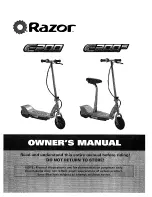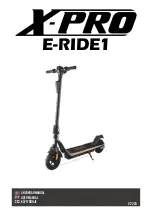
17
The wheel can be attached to the frame and fork in a number of different ways. In addition to
the standard systems in which the wheel is held on by axle nuts or quick-release devices,
different types of floating axles exist. These can be held in place by a screw connection or
different types of quick-release devices. If your bike has a floating axle, please also refer to
the enclosed manufacturer's user manual or visit the web pages of the relevant manufacturer
in the Internet.
Tighten all screws to the prescribed torque as otherwise screws could
shear off and components could come loose or detach altogether.
Checking the hubs
To check the hub bearings, proceed as follows:
Lift the wheel and spin it.
Check whether the wheel continues to turn through several revolutions before it stops moving.
If it stops suddenly, the bearing is damaged. This does not apply for front wheels with hub
dynamos.
To determine whether there is play in the hub bearing, try rocking the wheel in the bike fork or
rear triangle backwards and forwards perpendicular to the direction of travel.
If you notice that there is play between the bearings or if you encounter resistance when
turning the wheel, have the hub bearing adjusted by a specialist cycle shop.
Checking the Rims
If you are using a rim brake, the rim is subject to a higher degree of wear.
If a rim is worn it loses stability, which makes it more susceptible to
damage. If the rim is deformed, cracked or broken this can lead to serious accidents. If you
notice changes in a rim on your bike, do not ride on it. Have the problem checked by a
professional bike workshop.
















































